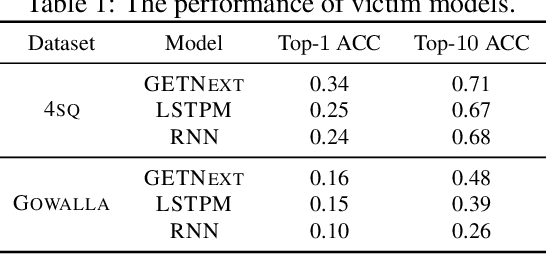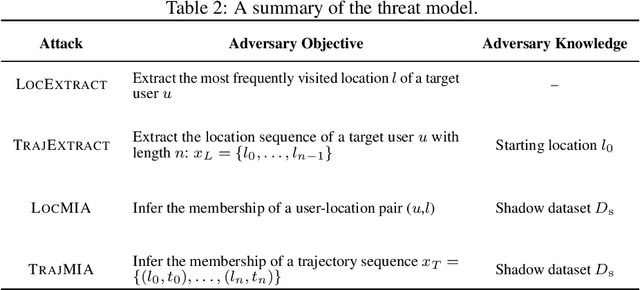Jinghuai Zhang
CollabEdit: Towards Non-destructive Collaborative Knowledge Editing
Oct 12, 2024



Abstract:Collaborative learning of large language models (LLMs) has emerged as a new paradigm for utilizing private data from different parties to guarantee efficiency and privacy. Meanwhile, Knowledge Editing (KE) for LLMs has also garnered increased attention due to its ability to manipulate the behaviors of LLMs explicitly, yet leaves the collaborative KE case (in which knowledge edits of multiple parties are aggregated in a privacy-preserving and continual manner) unexamined. To this end, this manuscript dives into the first investigation of collaborative KE, in which we start by carefully identifying the unique three challenges therein, including knowledge overlap, knowledge conflict, and knowledge forgetting. We then propose a non-destructive collaborative KE framework, COLLABEDIT, which employs a novel model merging mechanism to mimic the global KE behavior while preventing the severe performance drop. Extensive experiments on two canonical datasets demonstrate the superiority of COLLABEDIT compared to other destructive baselines, and results shed light on addressing three collaborative KE challenges and future applications.
BadMerging: Backdoor Attacks Against Model Merging
Aug 14, 2024



Abstract:Fine-tuning pre-trained models for downstream tasks has led to a proliferation of open-sourced task-specific models. Recently, Model Merging (MM) has emerged as an effective approach to facilitate knowledge transfer among these independently fine-tuned models. MM directly combines multiple fine-tuned task-specific models into a merged model without additional training, and the resulting model shows enhanced capabilities in multiple tasks. Although MM provides great utility, it may come with security risks because an adversary can exploit MM to affect multiple downstream tasks. However, the security risks of MM have barely been studied. In this paper, we first find that MM, as a new learning paradigm, introduces unique challenges for existing backdoor attacks due to the merging process. To address these challenges, we introduce BadMerging, the first backdoor attack specifically designed for MM. Notably, BadMerging allows an adversary to compromise the entire merged model by contributing as few as one backdoored task-specific model. BadMerging comprises a two-stage attack mechanism and a novel feature-interpolation-based loss to enhance the robustness of embedded backdoors against the changes of different merging parameters. Considering that a merged model may incorporate tasks from different domains, BadMerging can jointly compromise the tasks provided by the adversary (on-task attack) and other contributors (off-task attack) and solve the corresponding unique challenges with novel attack designs. Extensive experiments show that BadMerging achieves remarkable attacks against various MM algorithms. Our ablation study demonstrates that the proposed attack designs can progressively contribute to the attack performance. Finally, we show that prior defense mechanisms fail to defend against our attacks, highlighting the need for more advanced defense.
Tracing Back the Malicious Clients in Poisoning Attacks to Federated Learning
Jul 09, 2024Abstract:Poisoning attacks compromise the training phase of federated learning (FL) such that the learned global model misclassifies attacker-chosen inputs called target inputs. Existing defenses mainly focus on protecting the training phase of FL such that the learnt global model is poison free. However, these defenses often achieve limited effectiveness when the clients' local training data is highly non-iid or the number of malicious clients is large, as confirmed in our experiments. In this work, we propose FLForensics, the first poison-forensics method for FL. FLForensics complements existing training-phase defenses. In particular, when training-phase defenses fail and a poisoned global model is deployed, FLForensics aims to trace back the malicious clients that performed the poisoning attack after a misclassified target input is identified. We theoretically show that FLForensics can accurately distinguish between benign and malicious clients under a formal definition of poisoning attack. Moreover, we empirically show the effectiveness of FLForensics at tracing back both existing and adaptive poisoning attacks on five benchmark datasets.
Where have you been? A Study of Privacy Risk for Point-of-Interest Recommendation
Oct 28, 2023



Abstract:As location-based services (LBS) have grown in popularity, the collection of human mobility data has become increasingly extensive to build machine learning (ML) models offering enhanced convenience to LBS users. However, the convenience comes with the risk of privacy leakage since this type of data might contain sensitive information related to user identities, such as home/work locations. Prior work focuses on protecting mobility data privacy during transmission or prior to release, lacking the privacy risk evaluation of mobility data-based ML models. To better understand and quantify the privacy leakage in mobility data-based ML models, we design a privacy attack suite containing data extraction and membership inference attacks tailored for point-of-interest (POI) recommendation models, one of the most widely used mobility data-based ML models. These attacks in our attack suite assume different adversary knowledge and aim to extract different types of sensitive information from mobility data, providing a holistic privacy risk assessment for POI recommendation models. Our experimental evaluation using two real-world mobility datasets demonstrates that current POI recommendation models are vulnerable to our attacks. We also present unique findings to understand what types of mobility data are more susceptible to privacy attacks. Finally, we evaluate defenses against these attacks and highlight future directions and challenges.
Evading Watermark based Detection of AI-Generated Content
May 05, 2023



Abstract:A generative AI model -- such as DALL-E, Stable Diffusion, and ChatGPT -- can generate extremely realistic-looking content, posing growing challenges to the authenticity of information. To address the challenges, watermark has been leveraged to detect AI-generated content. Specifically, a watermark is embedded into an AI-generated content before it is released. A content is detected as AI-generated if a similar watermark can be decoded from it. In this work, we perform a systematic study on the robustness of such watermark-based AI-generated content detection. We focus on AI-generated images. Our work shows that an attacker can post-process an AI-generated watermarked image via adding a small, human-imperceptible perturbation to it, such that the post-processed AI-generated image evades detection while maintaining its visual quality. We demonstrate the effectiveness of our attack both theoretically and empirically. Moreover, to evade detection, our adversarial post-processing method adds much smaller perturbations to the AI-generated images and thus better maintain their visual quality than existing popular image post-processing methods such as JPEG compression, Gaussian blur, and Brightness/Contrast. Our work demonstrates the insufficiency of existing watermark-based detection of AI-generated content, highlighting the urgent needs of new detection methods.
PointCert: Point Cloud Classification with Deterministic Certified Robustness Guarantees
Mar 03, 2023



Abstract:Point cloud classification is an essential component in many security-critical applications such as autonomous driving and augmented reality. However, point cloud classifiers are vulnerable to adversarially perturbed point clouds. Existing certified defenses against adversarial point clouds suffer from a key limitation: their certified robustness guarantees are probabilistic, i.e., they produce an incorrect certified robustness guarantee with some probability. In this work, we propose a general framework, namely PointCert, that can transform an arbitrary point cloud classifier to be certifiably robust against adversarial point clouds with deterministic guarantees. PointCert certifiably predicts the same label for a point cloud when the number of arbitrarily added, deleted, and/or modified points is less than a threshold. Moreover, we propose multiple methods to optimize the certified robustness guarantees of PointCert in three application scenarios. We systematically evaluate PointCert on ModelNet and ScanObjectNN benchmark datasets. Our results show that PointCert substantially outperforms state-of-the-art certified defenses even though their robustness guarantees are probabilistic.
CorruptEncoder: Data Poisoning based Backdoor Attacks to Contrastive Learning
Nov 22, 2022Abstract:Contrastive learning (CL) pre-trains general-purpose encoders using an unlabeled pre-training dataset, which consists of images (called single-modal CL) or image-text pairs (called multi-modal CL). CL is vulnerable to data poisoning based backdoor attacks (DPBAs), in which an attacker injects poisoned inputs into the pre-training dataset so the encoder is backdoored. However, existing DPBAs achieve limited effectiveness. In this work, we propose new DPBAs called CorruptEncoder to CL. Our experiments show that CorruptEncoder substantially outperforms existing DPBAs for both single-modal and multi-modal CL. CorruptEncoder is the first DPBA that achieves more than 90% attack success rates on single-modal CL with only a few (3) reference images and a small poisoning ratio (0.5%). Moreover, we also propose a defense, called localized cropping, to defend single-modal CL against DPBAs. Our results show that our defense can reduce the effectiveness of DPBAs, but it sacrifices the utility of the encoder, highlighting the needs of new defenses.
Multimodal Motion Prediction with Stacked Transformers
Mar 24, 2021



Abstract:Predicting multiple plausible future trajectories of the nearby vehicles is crucial for the safety of autonomous driving. Recent motion prediction approaches attempt to achieve such multimodal motion prediction by implicitly regularizing the feature or explicitly generating multiple candidate proposals. However, it remains challenging since the latent features may concentrate on the most frequent mode of the data while the proposal-based methods depend largely on the prior knowledge to generate and select the proposals. In this work, we propose a novel transformer framework for multimodal motion prediction, termed as mmTransformer. A novel network architecture based on stacked transformers is designed to model the multimodality at feature level with a set of fixed independent proposals. A region-based training strategy is then developed to induce the multimodality of the generated proposals. Experiments on Argoverse dataset show that the proposed model achieves the state-of-the-art performance on motion prediction, substantially improving the diversity and the accuracy of the predicted trajectories. Demo video and code are available at https://decisionforce.github.io/mmTransformer.
Style Mixer: Semantic-aware Multi-Style Transfer Network
Oct 29, 2019



Abstract:Recent neural style transfer frameworks have obtained astonishing visual quality and flexibility in Single-style Transfer (SST), but little attention has been paid to Multi-style Transfer (MST) which refers to simultaneously transferring multiple styles to the same image. Compared to SST, MST has the potential to create more diverse and visually pleasing stylization results. In this paper, we propose the first MST framework to automatically incorporate multiple styles into one result based on regional semantics. We first improve the existing SST backbone network by introducing a novel multi-level feature fusion module and a patch attention module to achieve better semantic correspondences and preserve richer style details. For MST, we designed a conceptually simple yet effective region-based style fusion module to insert into the backbone. It assigns corresponding styles to content regions based on semantic matching, and then seamlessly combines multiple styles together. Comprehensive evaluations demonstrate that our framework outperforms existing works of SST and MST.
 Add to Chrome
Add to Chrome Add to Firefox
Add to Firefox Add to Edge
Add to Edge